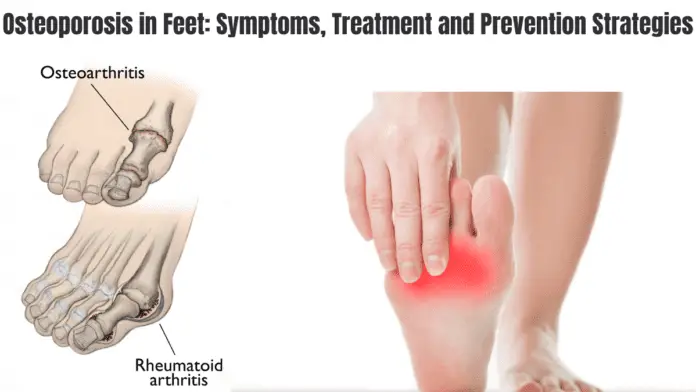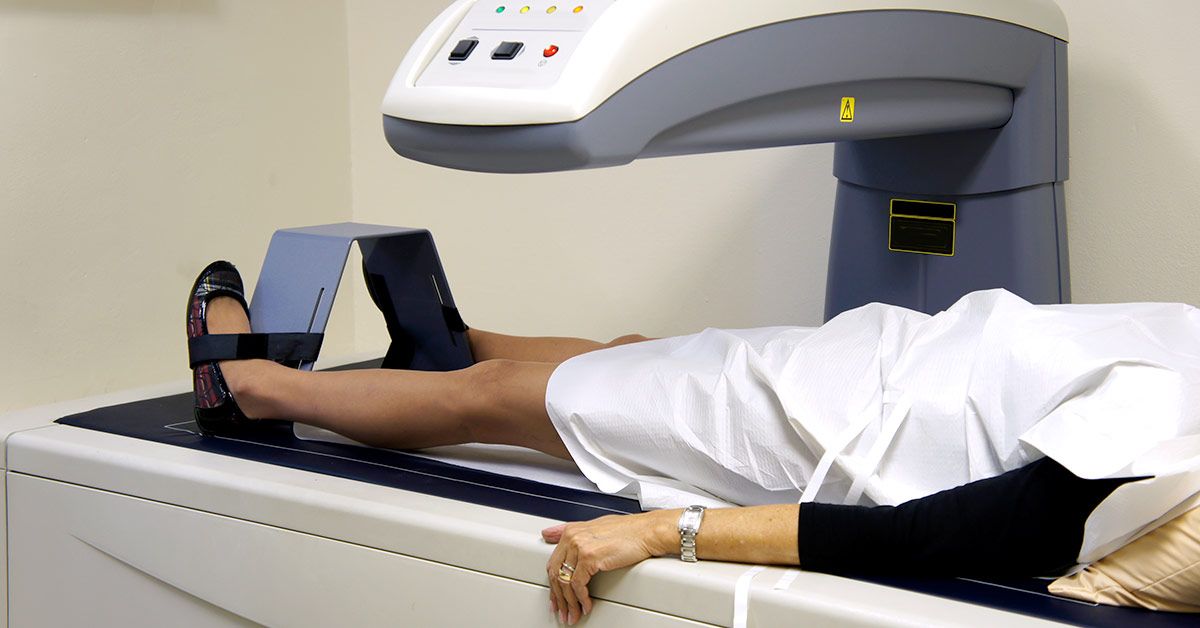
Osteoporosis is a serious medical condition that affects the bones of the body, leading to weakened and brittle bones. It can affect any part of the body, but it is especially dangerous when it affects the feet. When osteoporosis strikes in this vulnerable area, it can lead to debilitating pain and even disability. That’s why it’s so important for people to understand what causes osteoporosis in feet and how they can prevent or minimize its effects. In this article, we will discuss what osteoporosis in feet looks like, as well as strategies for prevention and treatment. With knowledge comes power—by understanding more about this condition, you may be able to avoid some of its most painful consequences.
What is Osteoporosis?

Osteoporosis is a bone disease that causes bones to become weak and brittle over time. It occurs when the body does not produce enough new bone or absorb old bone fast enough, leading to decreased bone mass and density. As a result, bones become fragile and more likely to break if there is any kind of trauma or stress placed on them. Osteoporosis is a progressive condition, which means that it may worsen over time if not treated.
Understanding Osteoporosis in Feet
Osteoporosis can have a devastating effect on the feet, leaving individuals with intense pain and impaired mobility. Understanding this condition is the first step toward preventing or minimizing its impact.
How Osteoporosis Affects the Feet
When osteoporosis sets in, bones throughout the body may become weakened and brittle. In the feet, this might mean that the toes, ankles, heels, or arches of the foot can become weak and more prone to fracture. This can lead to pain and difficulty when walking or standing.
Symptoms and Signs of Osteoporosis in Feet
The signs and symptoms of osteoporosis can vary depending on the severity of the condition. However, common signs to look out for include bone pain, swelling, tenderness, and increased sensitivity in the feet. Some individuals may even experience a decrease in height as their bones shrink due to osteoporosis.
The Impact on Quality of Life and Mobility
As osteoporosis in feet progresses, the individual’s quality of life and mobility can take a major hit. With weaker bones, it becomes difficult or even impossible to perform some daily activities that were once easy. This can lead to both physical and mental fatigue as well as depression due to a lack of mobility.
Read: Postpartum Rib Pain: Causes, Symptoms, and Treatment Options
Foot Bones Prone to Osteoporosis
Osteoporosis is a medical condition that weakens bones. It can affect the bones in your feet, like your toes, ankles, heels, and arches. These bones are more likely to get osteoporosis because they take on a lot of stress when you walk or stand. If you have osteoporosis in your feet, it can cause pain and make it hard to do daily activities.
Diagnosing Osteoporosis in Feet

The role of medical professionals is critical when it comes to diagnosing osteoporosis in feet. A podiatrist or orthopedic specialist can assess the health of the bones in your feet and determine if there are any underlying issues that could potentially be causing pain or mobility issues. They can also take diagnostic tests and interpret the results to diagnose osteoporosis.
Common Diagnostic Tests
Common diagnostic tests for osteoporosis include an X-ray, CT scan, MRI, and/or dual-energy X-ray absorptiometry (DEXA). An X-ray will provide an image of the bones in the feet and can detect potential fractures or weakened areas. A CT scan and MRI are more detailed images that can reveal any soft tissue damage, cysts, or abnormalities in the bone structure. DEXA is a specialized procedure used to measure bone density, which helps doctors determine how much mineral content is present in the bones of your feet.
Interpreting Test Results
Once a diagnosis is made, it is important to listen to the advice and instructions of your doctor. They will be able to provide you with a plan for treatment or prevention that is tailored specifically to your needs. It is also important to follow all recommended lifestyle changes, such as exercising regularly, eating a healthy diet rich in calcium and vitamin D, and avoiding smoking or drinking alcohol.
Bone Density Test for Feet
A bone density test helps doctors find out if you have osteoporosis in your feet. It looks at the minerals in your bones to see if they are weak or have any breaks. The doctor will use the results of this test to decide how to treat you and make sure your bones stay healthy.
Treatment Options for Osteoporosis in Feet
If you are diagnosed with osteoporosis in your feet, it is important to talk to your doctor about treatment options. Depending on the severity of the condition, there are a variety of treatments that can help reduce symptoms and improve mobility.
Common treatments include medications, physical therapy, orthotics, and surgery.
1. Medications
Your doctor may prescribe certain medications to slow down the progression of osteoporosis in your feet. These drugs can help reduce pain, inflammation, and swelling. They can also help rebuild bone mass and strengthen bones that have been weakened by the condition.
2. Physical Therapy
Physical therapy can help improve your mobility and reduce the pain caused by osteoporosis. A physical therapist can teach you special stretches and exercises to strengthen the bones in your feet. They may also recommend lifestyle changes, such as wearing supportive shoes or avoiding high-impact activities.
3. Orthotics
Orthotic devices are designed to help support and cushion the feet, can reduce pain, and improve stability. Orthotics are custom-fitted specifically for your feet and may include arch supports, heel pads, or other devices that provide extra cushioning.
4. Surgery
In some cases, surgery may be recommended to treat osteoporosis in your feet. This type of surgery is usually used to correct fractures or deformities caused by the condition. It may also be performed to reduce pain and improve mobility.
It is important to talk to your doctor about all of the treatment options available so that you can make an informed decision on which one is best for you. With the right treatment, it is possible to manage your condition and achieve a good quality of life.
Read: Hip Pain after C-Section: Causes, Symptoms, and Treatment Options
Prevention Strategies for Osteoporosis in Feet
Once you have been diagnosed with osteoporosis in your feet, it is important to take steps to prevent the condition from getting worse. The best way to do this is to make lifestyle changes that will help strengthen and protect the bones in your feet.
1. Exercise: Regular exercise is key to maintaining strong bones in your feet. Low-impact activities, such as walking or swimming, can help improve circulation and strengthen the bones without putting too much stress on them. Weight-bearing exercises are also beneficial, as they help build bone density.
2. Diet: Eating a diet rich in calcium and vitamin D can help strengthen your bones and reduce the risk of fractures. Foods such as dairy products, leafy green vegetables, nuts, and fish are all excellent sources of these nutrients.
3. Avoid Smoking & Drinking: Both smoking and drinking alcohol can significantly increase your risk for osteoporosis in feet. It is important to avoid both of these habits in order to protect your bones.
4. Wear Supportive Shoes: Wearing supportive shoes can help reduce stress on the feet and improve your balance, which can help prevent falls that could lead to fractures.
By following these prevention strategies, you can help keep your bones strong and healthy and reduce the risk of developing osteoporosis in your feet.
Living with Osteoporosis in Feet
It is important to remember that osteoporosis in your feet can be managed and treated with the right approach. Talk to your doctor about all of the treatment options available so that you can make an informed decision on which one is best for you. Additionally, taking steps to prevent the condition from getting worse can help reduce symptoms and improve mobility. With the right treatment and lifestyle changes, you can manage your condition and lead an active, healthy life.
By following these prevention strategies, you can help keep your bones strong and healthy and reduce the risk of developing osteoporosis in your feet. Living with osteoporosis in feet does not have to mean a decreased quality of life. With the right treatment and lifestyle changes, you can manage your condition and lead an active, healthy life.
Conclusion
In conclusion, osteoporosis in the feet is a debilitating condition that can cause intense pain and impair mobility. It is crucial to understand the causes, symptoms, and impact of osteoporosis in order to prevent or minimize its effects. Diagnosing osteoporosis in the feet requires the expertise of medical professionals who can perform diagnostic tests and interpret the results accurately. Treatment options include medications, physical therapy, orthotics, and surgery, depending on the severity of the condition. Preventive measures such as regular exercise, a calcium-rich diet, avoiding smoking and excessive alcohol consumption, and wearing supportive shoes can help maintain bone health and reduce the risk of developing osteoporosis in the feet. By following these strategies, individuals can manage the condition effectively and lead an active and healthy life.











